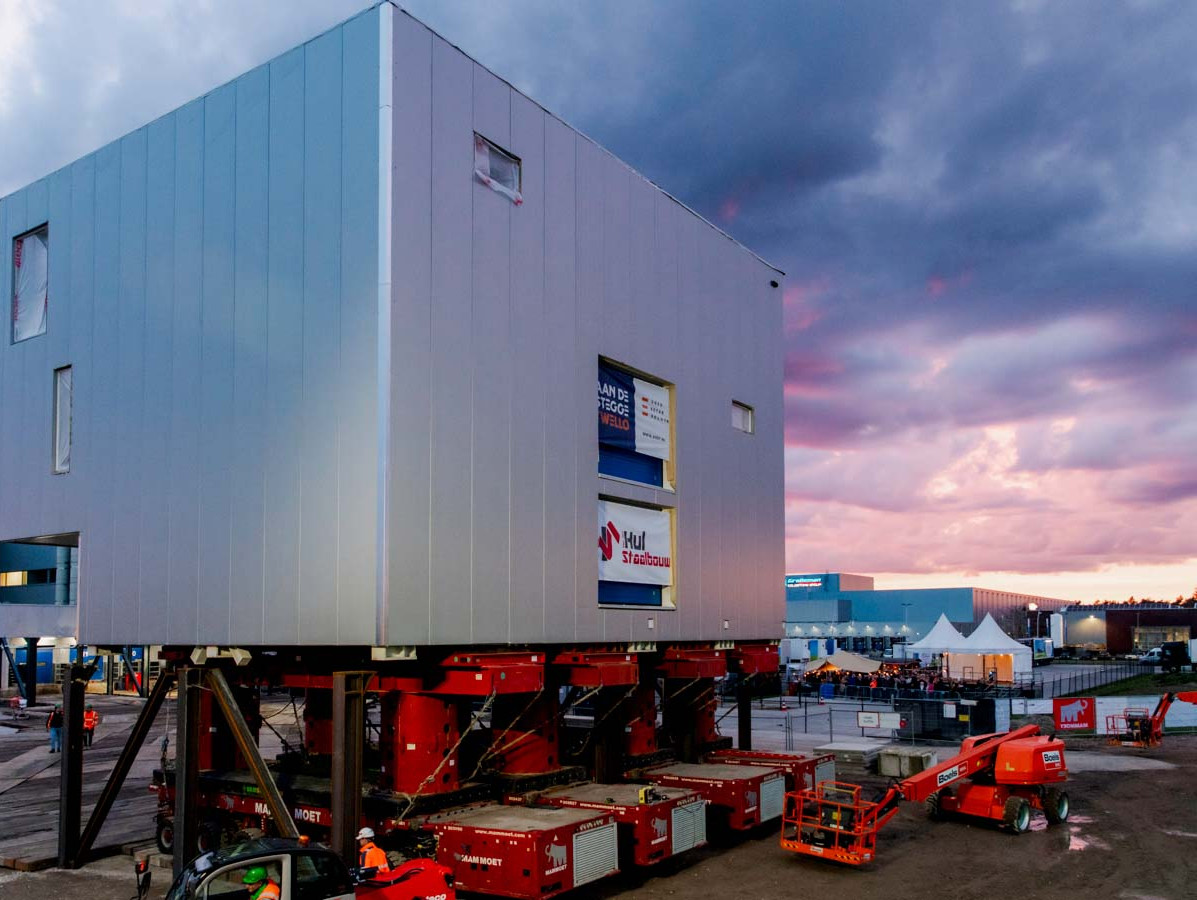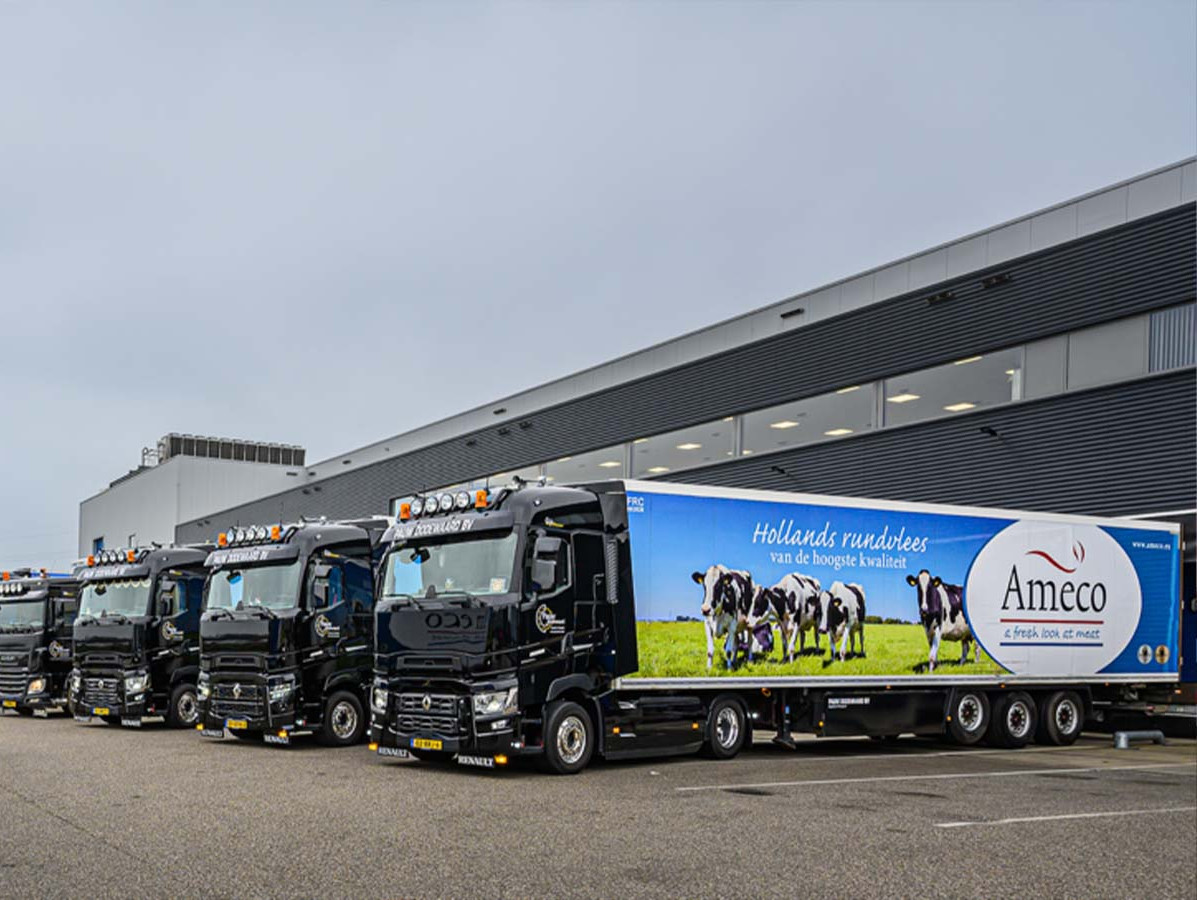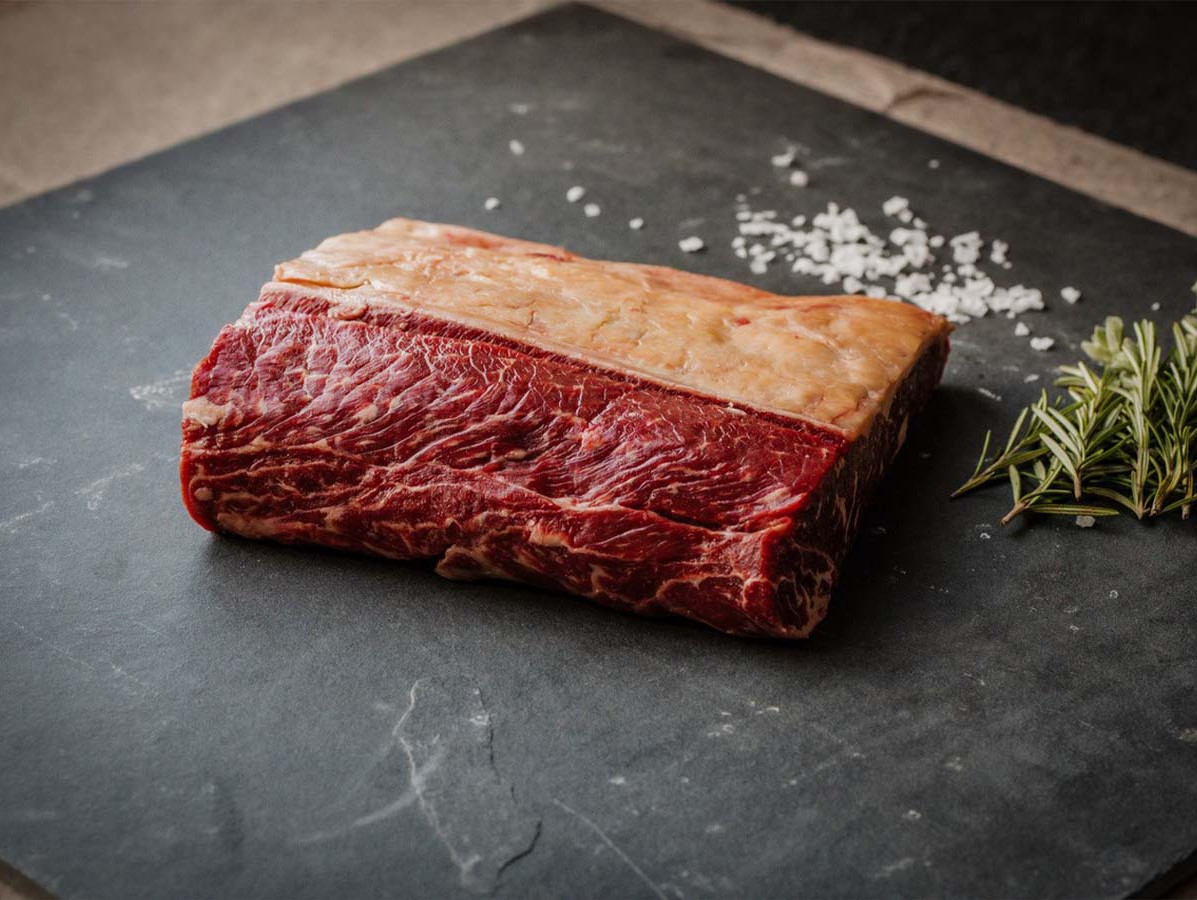
The massive relocation of Ameco’s new cooling system in Apeldoorn this past spring attracted a large crowd. This comes as no surprise, as how often do you get the chance to witness such a spectacular operation? Now that the building with the cooling system is ready for use, there’s no time to sit still. The next project is already in the (figurative) pipeline.
Ameco relocated in 2017 from Amsterdam to Apeldoorn, mainly due to poor accessibility and the restructuring of the old location in Amsterdam-West. In Apeldoorn, the company built a hyper-modern slaughterhouse. What was the reason behind the most recent renovation and expansion of the slaughterhouse this year? If you ask Karel van Westreenen, the COO of Ameco, you’ll be treated to a waterfall of interesting conversation.
“It all starts with our passion for delivering quality meat and making the most out of the cow.” You can hear the pride and enthusiasm in Karel’s voice. “Every product that leaves our company must be of a high-quality standard. That’s why food safety is the top priority at every moment of production. But we also pay a lot of attention to minimizing the physical strain on our staff as much as possible. Workstations are designed so that the work comes to the people: for example, they don’t need to walk along the line or push carcasses aside.” Since the new facility was launched, Ameco’s focus has been on maximizing the value of the entire animal. “Over the years, we’ve made countless improvements in that regard. We particularly wanted to enhance the gastrointestinal package to a higher level of quality,” Karel says.
To accommodate the additional value-adding steps for the ‘fifth quarter’ (all by-products such as liver, lungs, spleen, kidneys, and head), the company soon ran out of space. To raise the gastrointestinal package from category 3 (pet food) to category 4 (human consumption), additional processing steps are required, such as washing omasums and an extra scalding step for the rumen. “After two scalding steps, the rumen goes into an innovative cooling process, which ensures that the products are cooled from 82 degrees Celsius to below 4 degrees Celsius within two hours. They are ready for shipping on the same day.”

The company didn’t outgrow its space only because of these additional value-adding steps. Since 2017, Ameco has managed to double its capacity. As a result, the cooling capacity was also reaching its limit. So it was time to expand. “What’s remarkable is that our new cooling system was built next to the existing buildings and installed as a self-supporting structure over the barn in one weekend,” says Karel. “We chose a self-supporting system because the barn wasn’t suitable for adding a second floor. We would’ve needed to pile, and that was something we absolutely wanted to avoid. The barn needs to stay spacious and open, without columns, so that the barn can remain designed according to Temple Grandin’s principles. That’s how we came up with this solution. By literally sliding the new building over the existing one, we also created a roof for the livestock trucks: a nice improvement for animal welfare. A big added benefit of this approach is that it didn’t disrupt our daily work processes.”
Ameco has also invested in animal welfare in other ways. Karel mentions examples such as insulating the stun box to reduce noise and the ‘cattle-pusher,’ an automatic driving gate in the Temple Grandin-designed corridor that calmly guides the animals to the slaughter without the need for prodding. “With this system, prodding is a thing of the past,” he says. A new addition is also the implementation of an AI camera system. “We do a lot of things right in our sector, but we’re judged on the incidents,” Karel points out. “With a smart camera system, we can show that we are always ‘in control.’ The cameras are always alert, never looking the wrong way. Every interaction between humans and animals is recorded in a management system, allowing us to proactively manage any incidents and take immediate action. It brings a lot of peace and clarity.”
Karel is clearly proud of his company, especially its integrated chain, in which they control everything. “We source the cattle ourselves in the Netherlands, and we slaughter, process, and select all parts of the animal ourselves. We make sure that every piece gets the optimal value. Between 20 and 30% of Dutch dairy cows are removed from milk production each year. We create a premium end product from these dairy cows. In addition, we process rosé veal, supplied through the VanDrie Group. For top restaurants, we select the best quality beef with extreme marbling from Dutch cattle for our ‘Premium Select Label.’ Beef with the ‘Superieur Select Label,’ also featuring beautiful marbling, is mainly shipped to Spain.”

The high quality of their selections was recently demonstrated at the ‘World Steak Challenge,’ a prestigious competition that brings together steak producers from around the globe. A panel of industry experts, including renowned chefs and meat scientists, evaluated each entry on factors such as taste, tenderness, juiciness, and marbling. Ameco won two gold medals (for sirloin steaks and tenderloin steaks) and one silver (for ribeye). “We are convinced that if we, along with our staff, put our heart and soul into our product, we will continue to outperform the competition.”
“What’s our next step?” Karel doesn’t need a second to think about it. “We are going to fully integrate the fifth quarter into the slaughter process. Currently, we hang the organs, cool them, and process and package them the next day. This results in some drying of the product – which means yield loss – and the two separate processes also require two separate cleaning cycles. This needs to be more efficient. Soon, we will only handle the pieces of meat once. With a good cooling cycle and full integration, we will complete everything in one go. This will also offer our customers a longer shelf life. However, to make this step, we lacked cooling capacity. We have now addressed that. A single cleaning cycle will undoubtedly lead to greater efficiency, lower labor costs, and reduced water usage. The water for cleaning comes from the cooling system. It is stored in buffer tanks and then brought back inside via heat exchangers. The water is heated from around 60 degrees to 90 degrees, making it suitable for cleaning. This will result in a gas reduction of about 80%.”
It’s not as if there was a set plan from the start: “That’s not how things work in real life!” Karel laughs. “We just had the ambition to add an extra value-adding step, and then we ran into cooling capacity issues. You solve that, and new doors open. Thanks to the expansion of the cooling system and moving the technical room to the new building, opportunities arise for extra locker rooms and storage for staff, more space for the NVWA, and we can expand the canteen. That’s what we’ll work on next! Fortunately, within the VanDrie Group, we have a lot of knowledge and expertise – not only in animal welfare and meat technology but also in sustainability solutions and innovation – and we share that knowledge with each other. We’re continuously improving. The process of improvement never stops!”
Source: Vakblad Voedingsindustrie 2024